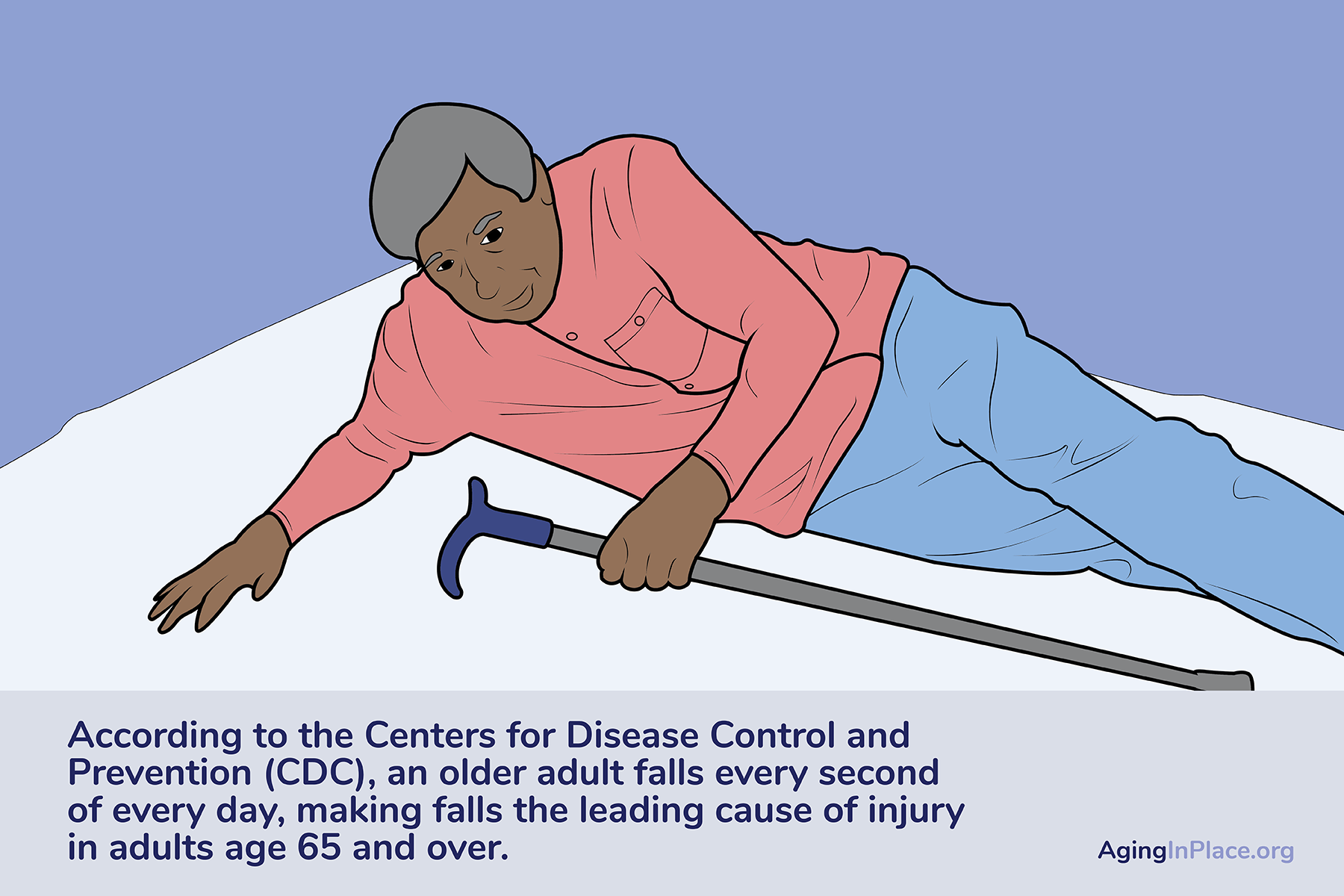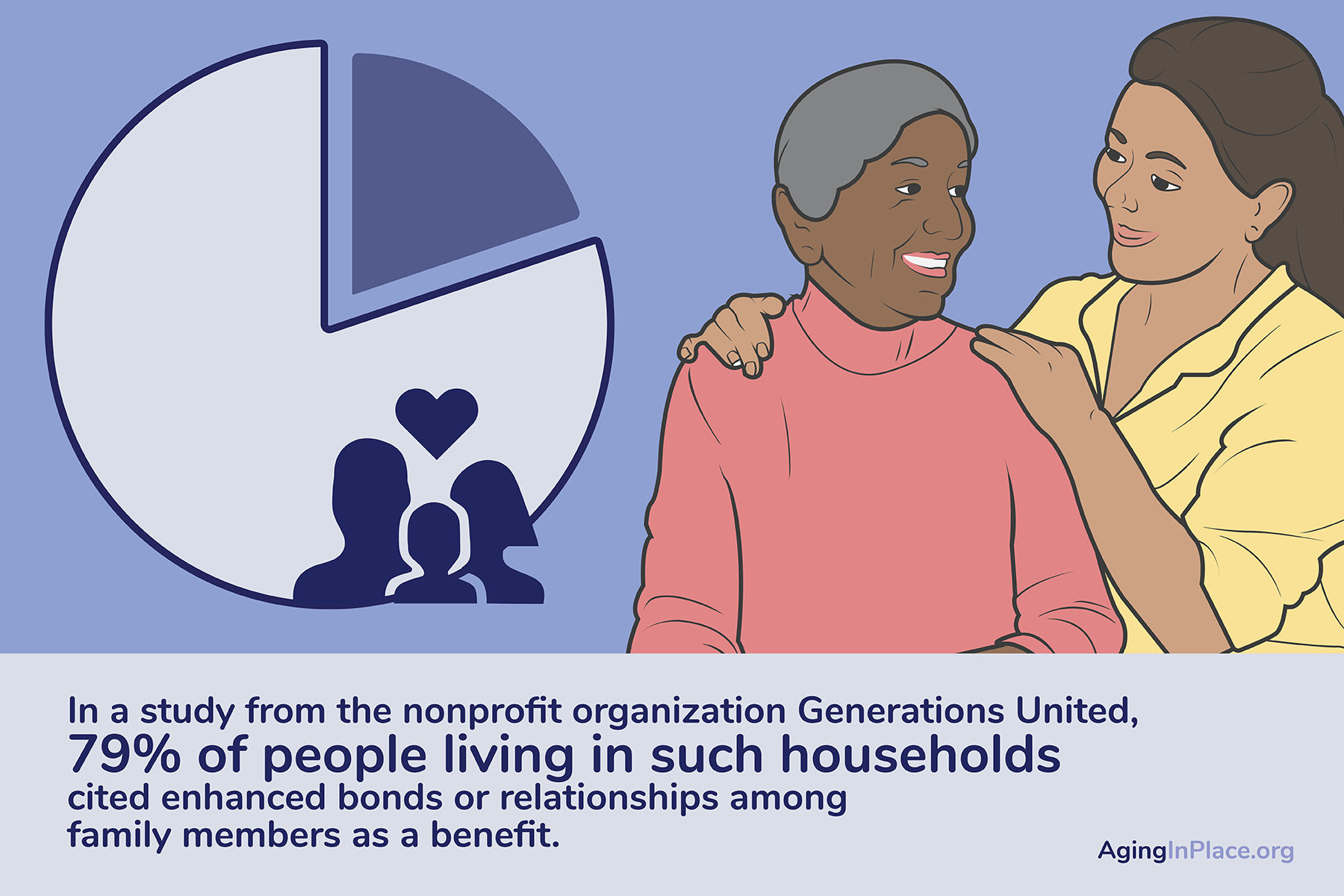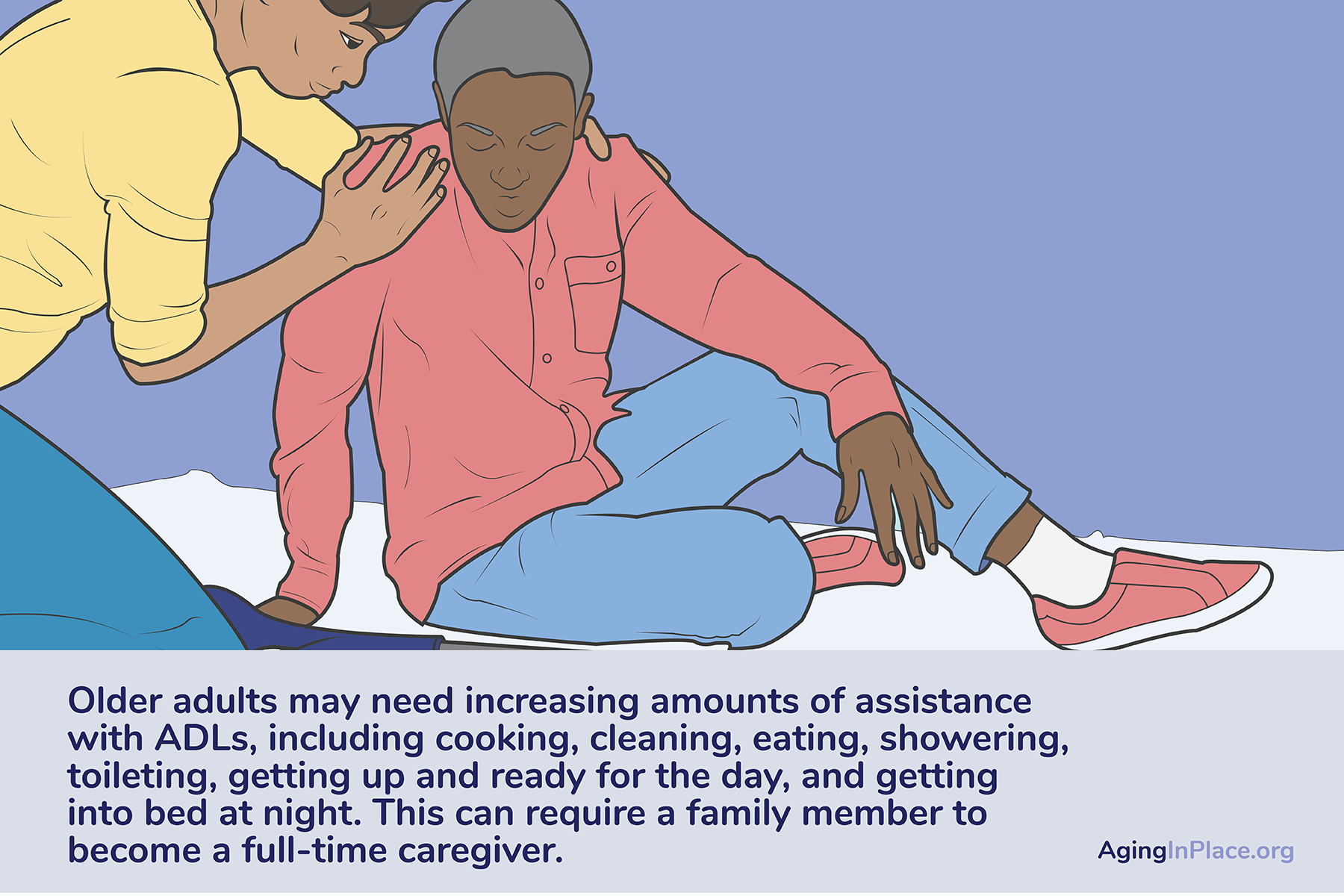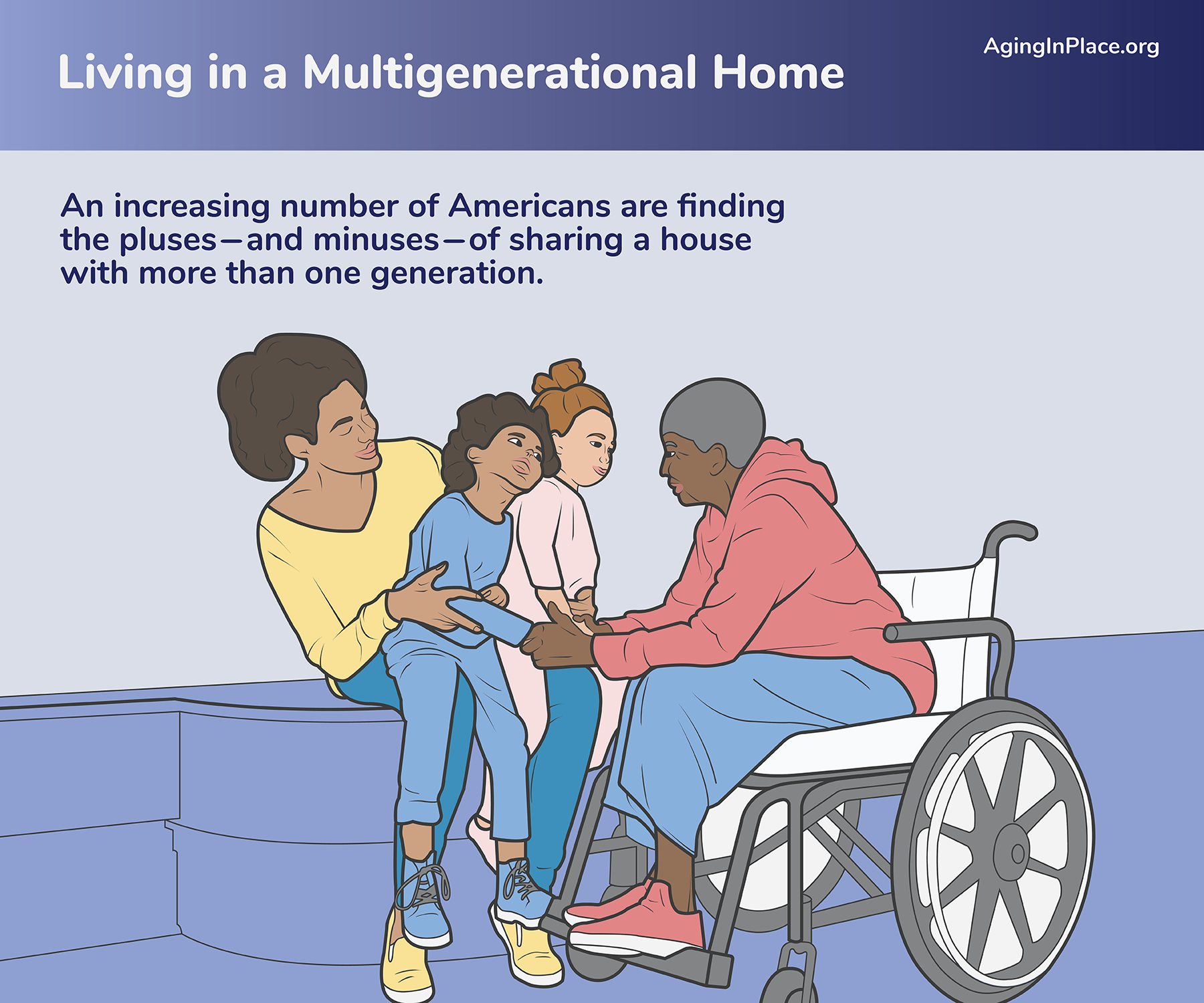Creating a Safe Home

According to the Centers for Disease Control and Prevention (CDC), an older adult falls every second of every day, making falls the leading cause of injury in adults age 65 and over. One sure way to help dodge these statistics is to turn to experts, including physical therapists and occupational therapists, who can recommend ways to create a safer home. Shayna Mitchell, LPN, is a nurse in Los Angeles who is a case manager with Cooper Senior Care, a geriatric consulting business. She goes into people’s homes to help assess whether older adults can safely carry out Activities of Daily Living (ADL).
“I usually start with the bathroom,” Mitchell said. She recommends things like raising toiletseat height, buying a shower chair, making sure there is easy access to the shower, adding a handheld nozzle and installing grab bars.
Mitchell sometimes teams up with Alex Katz, owner of Call Before You Fall, a business in Los Angeles that specializes in helping people age in place. Katz points out that sometimes the best solution is in remodeling, but that he often can suggest equipment that will foster safety without construction.
“I consider us an education company as much as installers and licensed contractors,” Katz said. “About 90% of the time somebody calls us out for a bathroom remodel, we find solutions that are faster and cheaper, such as customizing a sliding bench that allows older adults to transfer over the bathtub side or shower lip.”
Along with safety in the bathroom, Mitchell said she advises people to eliminate throw rugs and to remove excess furniture so it’s easier for older adults to make their way through rooms. She also tucks away any electric cords that could be tripping hazards and assesses stairway safety.
“Sometimes it’s as simple as installing a railing, but sometimes they might need a ramp or a lift of some kind,” Katz added. Both outdoor and indoor lighting are very important to address as well, so you can easily see where you’re going and avoid obstacles.
The Lombards were fortunate to have a semi-attached unit on their property that they were able to convert into a home for Patricia’s parents. Safety issues were addressed with the help of an ADL expert that came recommended by her plumber. Their modifications included installing railings, replacing steps with a ramp, and swapping out a gravel outdoor area for concrete.
They also took into consideration another important element of multigenerational living—accessibility. If your elderly parents use a wheelchair or a walker, experts advise ensuring they can easily navigate through doorways and get to what they need—as well as what they enjoy. This can include placing items on lower shelves, or even lowering countertops. The Lombards even went as far as installing raised planters so that Rocci could sit or stand while seeing to his tomatoes, basil, and marigolds.
Allotting Physical and Emotional Space
Having their own separate living unit gave Rocci and Anne something that experts agree is key to multigenerational living—space. Each family member needs both physical space to claim as their own, as well as emotional space to be with themselves and with their spouses. John L. Graham, Professor Emeritus at the University of California, Irvine, and co-author of All in the Family: A Practical Guide to Successful Multigenerational Living, says it can be very helpful to “include separate kitchens and entrances.” He explains that such structural features allow for more independence and privacy.
When Anthea and Angel were looking for a new home in New Rochelle, N.Y., making sure there was enough room to comfortably accommodate Irma was a top consideration.
“I would say space and privacy are two of the biggest challenges for people who have multigenerational families,” Anthea said. They were lucky enough to find a home with two ensuite bedrooms. “It helps that we each have our own space to retreat to, especially in the evenings.”
Mitchell points out that there are many ways to make space for your parents.
“If you have a separate bedroom, you could add easy chairs and a coffee table to create an area for them to hang out,” she said. “Some families create space by separating off a portion of the living room with draperies, screens, or room dividers.”
Space isn’t just about sleeping quarters. When Rocci and Anne moved into their daughter’s home, Rocci would come over in the morning to sit, have coffee, and read the papers in the family breakfast room.
“It felt like he was always there, and as big as this house is, it started to feel small,” Patricia said. “So, we added a spot in the guest house where my parents could sit and have coffee together in the morning.”
The whole family was happy with the result. “This modification gave everyone their own place to be, and that really helped,” Patricia said.
House Rules
As soon as you consider forming a multigenerational home, you should “sit down with everyone involved and come up with ‘house rules,’” Graham advised. Along with financial expectations, these rules can include designating certain areas for homework, a home office, or even a place for assigning tasks such as eldercare, childcare, safety checks, cleaning, laundry, cooking, and dishwashing.
Mitchell recommends letting elderly family members choose their roles, noting that this “helps them feel independent.” Everyone needs to be clear about financial responsibilities, exchange of services such as eldercare and childcare, and house rules. The rules can also cover specified quiet times, like, “After 9:30 P.M. the sound on the TV has to be turned way down.”
It’s important to create guidelines for having visitors, including extended family, Graham noted. You might want to detail how many people can visit at once, what time of night is too late for visits and how long houseguests can stay. Without such rules, Anthea said she sometimes struggled when Angel’s siblings would visit and stay for unspecified periods of time.
Once you’ve come up with the house rules, write them down and plan to revisit and modify them in a month.
“You can’t just jump in and set rules and expect everything to work,” Graham said. “You should expect that they probably won’t work. It’s a process, not an event.”
He recommended scheduling monthly reviews for the first three months, then periodically for the rest of the time you are living together.
Communication and Empathy
These periodic meetings are one way to help establish clear and consistent communication, which experts agree is essential for a harmonious household. Conflicts are bound to arise, so the key is to deal with them as quickly as possible.
“I’ve found that communication with family living in the house as well as extended family is the thing that will help keep resentment from growing,” Anthea said.
Along with household meetings, it’s important to set up regular meetings with extended family. These too should start before your parents move in. Sibling rivalries and parental role struggles will inevitably surface, so it’s crucial for everyone to remember that you love each other, and you are there to help each other.
Anthea emphasizes another essential tool for multigenerational living—empathy.
“There are times when there will be misunderstandings,” she said. “And those times call for empathy.”
It helps her to remember that Irma is from another generation and another culture.
“When I’m frustrated, I sometimes look at her and remind myself, ‘She was born on a farm in Colombia in 1930, and I’m expecting her to understand the weather app on my phone.”
Family Activities

Successful multigenerational living can take some effort, but it’s also important to remember to enjoy each other. In a study from the nonprofit organization Generations United, 79% of people living in such households cited enhanced bonds or relationships among family members as a benefit. Don’t forget to schedule time together doing things everyone likes to do. The trick here is planning enough together time while also allowing for independence and privacy. The new house members might want to take part in every activity, which could feel overwhelming, or they might worry about being a burden and keep to themselves so often that they feel lonely. Once again, communication is key.
“People need to be able to say, ‘I need time by myself’ or ‘Can I please join you?’” Graham said.
You can try setting rules about how often you eat together and how often you schedule family activities, such as worship services, watching favorite movies or TV shows as a group, and talking walks.
Anthea noted that when her children were younger, the whole family ate together at least three times a week, and sometimes Irma would join Sunday family outings like trips to the zoo and sporting events. The Lombards enjoyed watching basketball on TV together and visits to local attractions like Huntington Gardens. Mitchell suggests another family activity—puzzles.
“A lot of older adults like them, and so do younger children,” she said.
Safe and Independent
As our parents age, we need to be sure that they are safe and comfortable at home, but we also want them to feel and remain independent as long as possible. Mitchell suggested periodic visits to their home to make sure all was well. Having them present for these visits, and asking for their input, will make them feel like they are taking control of their own safety. It’s also important to figure out the best way to quickly touch base with your parents and for them to easily contact you if they need help. Possibilities include cellphones, intercom systems, and walkie talkies. Mitchell says that even a bell can work.
“Some of my older adults really enjoy ringing the bell to make me come help them,” Mitchell said. “It’s like they’re royalty, and they enjoy playing around with that.”
If mental or physical health deteriorates, however, Mitchell notes that some families choose to install an intercom or use a medical alert system.
When to Consider Extra Help

Older adults may need increasing amounts of assistance with ADLs, including cooking, cleaning, eating, showering, toileting, getting up and ready for the day, and getting into bed at night. This can require a family member to become a full-time caregiver. Mitchell said as caretaking needs increase, bringing part- or full-time caregivers into the home, if possible, can greatly relieve pressure on family members.
Patricia agreed. “We had to hire help because I couldn’t be both the caregiver and the child,” she said. She worked with Cooper Senior Care, the geriatric consulting business that Mitchell works with, to hire companion-type caregivers, then leveled up to nursing care as her parents started having more medical issues.
In the past year, Irma has faced more medical challenges and can no longer be left alone, so Anthea spends much of her time caregiving and receives lots of help from Angel. Their son, Dominic, who moved back home after college, pitches in as well. Anthea said she is prepared to bring in outside help when Irma needs more trained medical attention.
Bonus Family
In the Generations United study, 98% of Americans living in multigenerational homes said that their household successfully functions, and 76% of them cited positive impacts on mental and/or physical health. Living in a home with three generations can be challenging but also rewarding. Anthea calls it “a delicate dance.”
“Life as you know it definitely changes,” she said, “but not for the worse. It’s like getting a bonus member of the family.”
She admitted that there were times when she worked full-time, managed the children, and took care of the house that having another person to care for felt like a bit much. But, she said, “when we addressed our issues and changed the way a few things were done, we were able to feel like there were only advantages to the situation. One big plus is that Angel has been able to give back to the woman that gave him everything.” Another is that since Irma doesn’t speak much English, Dominic and Elise picked up conversational Spanish.
The younger generation benefits from living in multigenerational homes in many ways. A study published in The Journals of Gerontology found that growing up in a household with both parents and grandparents can lead to higher levels of cognitive functioning.
Patricia said she thinks that having her parents around really helped Allie and her sister, Emily, who was away at college when her grandparents moved in.
“They got to see what it is like to age,” Patricia said, “and they gained empathy and deep appreciation for older people.”
The children also came away with a deeper connection to their grandparents. The elder Lombards, who both passed away in 2019 after living with the family for six years, “were beyond grateful to spend so much time with their grandchildren,” Patricia said. “There was a lot of joy—there were also dark days. Caregiving is hard. But looking back I realize how much the experience enriched us all. I am so grateful that I was able to give my parents the autonomy and the ability to be independent for as long as possible and to live out their lives the way they wanted to. I don’t regret a minute of it.”


